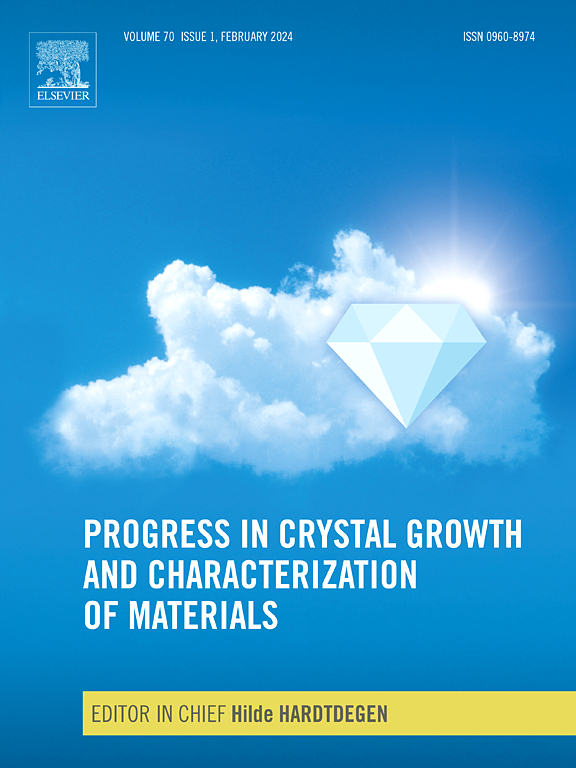第7基团与四面体阴离子的非共价相互作用
IF 1.9
2区 材料科学
Q1 CRYSTALLOGRAPHY
Progress in Crystal Growth and Characterization of Materials
Pub Date : 2025-10-10
DOI:10.1016/j.pcrysgrow.2025.100687
引用次数: 0
摘要
对结构数据库的有针对性的调查,特别是对有机高透酸盐、高技术酸盐和高锰酸盐的调查显示,这些四面体阴离子(MO₄)形成了各种显著的超分子合子。这些阴离子可以在晶体结构中扮演不同的角色。这篇综述提供了详细的分析已知的有机和一些选定的无机盐和配合物含有这类四面体阴离子,确定了几个以前被忽视的上层结构亚型。这些上层结构根据它们的非共价接触分为四类:簇、聚合物、网络和框架。我们的分析表明,在有机和无机晶体中,四面体阴离子都能通过非共价相互作用形成55种不同的结构基序,可将其分为24种键合相互作用。在超结构中引入了四面体及其中心原子的密度概念。此外,对锰亚群化合物中阴离子-阴离子非共价相互作用进行了简要的统计分析。本文章由计算机程序翻译,如有差异,请以英文原文为准。

Non-covalent interactions of 7th group and tetrahedral anions
A targeted survey of structural databases, particularly focusing on salts of organic perrhenates, pertechnetates, and permanganates reveals that these tetrahedral anions (MO₄) form a variety of notable supramolecular synthons. These anions can assume diverse roles within the crystal structures. This review provides a detailed analysis of known organic and some selected inorganic salts and complexes containing such tetrahedral anions, identifying several previously overlooked subtypes of suprastructures. These suprastructures are classified into four categories based on their non-covalent contacts: clusters, polymers, networks, and framework. Our analysis demonstrates that tetrahedral anions are capable of forming 55 distinct structural motifs through non-covalent interactions in both organic and inorganic crystals, which can be categorized into 24 types of bonding interactions. We introduce the concept of denticity of the tetrahedron and its central atom within superstructures. Additionally, a brief statistical analysis of anion–anion non-covalent interactions in compounds of the manganese subgroup is presented.
求助全文
通过发布文献求助,成功后即可免费获取论文全文。
去求助
来源期刊

Progress in Crystal Growth and Characterization of Materials
工程技术-材料科学:表征与测试
CiteScore
8.80
自引率
2.00%
发文量
10
审稿时长
1 day
期刊介绍:
Materials especially crystalline materials provide the foundation of our modern technologically driven world. The domination of materials is achieved through detailed scientific research.
Advances in the techniques of growing and assessing ever more perfect crystals of a wide range of materials lie at the roots of much of today''s advanced technology. The evolution and development of crystalline materials involves research by dedicated scientists in academia as well as industry involving a broad field of disciplines including biology, chemistry, physics, material sciences and engineering. Crucially important applications in information technology, photonics, energy storage and harvesting, environmental protection, medicine and food production require a deep understanding of and control of crystal growth. This can involve suitable growth methods and material characterization from the bulk down to the nano-scale.
 求助内容:
求助内容: 应助结果提醒方式:
应助结果提醒方式:


